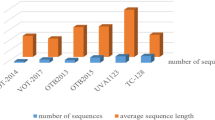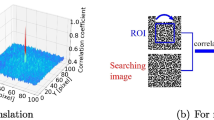Abstract
We introduce a stochastic filtering technique for the tracking of closed curves from image sequence. For that purpose, we design a continuous-time dynamics that allows us to infer inter-frame deformations. The curve is defined by an implicit level-set representation and the stochastic dynamics is expressed on the level-set function. It takes the form of a stochastic partial differential equation with a Brownian motion of low dimension. The evolution model we propose combines local photometric information, deformations induced by the curve displacement and an uncertainty modeling of the dynamics. Specific choices of noise models and drift terms lead to an evolution law based on mean curvature as in classic level set methods, while other choices yield new evolution laws. The approach we propose is implemented through a particle filter, which includes color measurements characterizing the target and the background photometric probability densities respectively. The merit of this filter is demonstrated on various satellite image sequences depicting the evolution of complex geophysical flows.














Similar content being viewed by others
References
Allaire, G., Jouve, F., Toader, A.-M.: Structural optimization using sensitivity analysis and a level-set method. J. Comput. Phys. 194(1), 363–393 (2004)
Arnaud, E., Mémin, E.: Partial linear Gaussian model for tracking in image sequences using sequential Monte Carlo methods. Int. J. Comput. Vis. 74(1), 75–102 (2007)
Artana, G., Cammilleri, A., Carlier, J., Mémin, E.: Strong and weak constraint variational assimilations for reduced order fluid flow modeling. J. Comput. Phys. 231(8), 3264–3288 (2012)
Avenel, C., Mémin, E., Pérez, P.: Tracking closed curves with non-linear stochastic filters. In: Conf. on Scale Space and Variational Methods (SSVM’09). Voss, Norway (2009)
Avenel, C., Mémin, E., Pérez, P.: Stochastic filtering of level sets for curve tracking. In: International Conference on Pattern Recognition (ICPR’10) (2010)
Avenel, C., Mémin, E., Pérez, P.: Tracking levels representation driven by a stochastic dynamics. In: 7th International Conference on Curves and Surfaces. Lecture Notes in Computer Science, vol. 6920, pp. 130–141 (2012)
Caselles, V., Kimmel, R., Sapiro, G.: Geodesic active contours. Int. J. Comput. Vis. 22(1), 61–79 (1997)
Chan, T., Vese, L.: Active contours without edges. IEEE Trans. Image Process. 10(2), 266–277 (2001)
Chang, Y., Hou, T., Merriman, B., Osher, S.: A level set formulation of Eulerian interface capturing methods for incompressible fluid flows. J. Comput. Phys. 449–464 (1996)
Coqrelle, M., Cottet, G.-H.: A vortex level set method for the two-way interacting coupling of an incompressible fluid with colliding rigid bodies. J. Comput. Phys. 227, 9121–9137 (2008)
Cottet, G.-H., Maitre, E.: A level set method for fluid structure interactions with immersed surfaces. Math. Models Methods Appl. Sci. 16(3), 415–438 (2006)
Crisan, D., Doucet, A.: Survey of convergence results on particle filtering methods for practitioners. IEEE Trans. Signal Process. 50(3), 736–746 (2002)
Crisan, D., Rosovskii, B. (eds.): The Oxford Handbook of Nonlinear Filtering. Oxford University Press, London (2010)
Dambreville, S., Rathi, Y., Tannenbaum, A.: Tracking deformable objects with unscented Kalman filtering and geometric active contours. In: American Control Conference, pp. 1–6 (2006)
Del Moral, P.: Feynman-Kac Formulae Genealogical and Interacting Particle Systems with Applications. Probability and Applications. Springer, New York (2004)
Dervieux, A., Thomasset, F.: A finite element method for the simulation of Rayleigh-Taylor instability. In: Approximation Methods for Navier-Stokes Problems. Lecture Notes in Mathematics, vol. 771, pp. 145–159. Springer, Berlin (1979)
Goldenberg, R., Kimmel, R., Rivlin, E., Rudzsky, M.: Fast geodesic active contours. IEEE Trans. Image Process. 10(10), 1467–1475 (2001)
Gordon, N., Salmond, D., Smith, A.: Novel approach to non-linear/non-Gaussian Bayesian state estimation. IEEE Process. F 140(2) (1993)
Gordon, N., Doucet, A., Freitas, J.D.: Sequential Monte Carlo Methods in Practice. Springer, Berlin (2001)
Hou, T., Lowengrub, J., Shelley, M.: Removing the stiffness from interfacial flows and surface tension. J. Comput. Phys. 114(2), 312–338 (1994)
Hou, T., Klapper, I., Si, H.: Removing the stiffness of curvature in computing 3D filaments. J. Comput. Phys. 143(2), 628–664 (1998)
Jiang, G.-S., Shu, C.-W.: Efficient implementation of weighted eno schemes. J. Comput. Phys. 126(1), 202–228 (1996)
Kimmel, R., Bruckstein, A.M.: Tracking level sets by level sets: a method for solving the shape from shading problem. Comput. Vis. Image Underst. 62(1), 47–58 (1995)
Kunita, H.: Stochastic Flows and Stochastic Differential Equations. Cambridge University Press, Cambridge (1990)
Merriman, B., Bence, J., Osher, S.: Motion of multiple junctions: a level set approach. J. Comput. Phys. 112(2), 334–363 (1994)
Mikula, K., Ševčvič, D.: A direct method for solving an anisotropic mean curvature flow of plane curves with an external force. Math. Methods Appl. Sci. 27, 1545–1565 (2004)
Niethammer, M., Tannenbaum, A.: Dynamic geodesic snakes for visual tracking. In: CVPR (1), pp. 660–667 (2004)
Osher, S., Fedkiw, R.: Level Set Methods and Dynamic Implicit Surface. Springer, Berlin (2003)
Osher, S., Paragios, N. (eds.): Geometric Level Set Methods in Imaging, Vision and Graphics. Springer, Berlin (2003)
Osher, S., Sethian, J.: Fronts propagating with curvature dependent speed: algorithms based on Hamilton-Jacobi formulation. J. Comput. Phys. 79, 12–49 (1988)
Papadakis, N., Mémin, E.: A variational technique for time consistent tracking of curves and motion. J. Math. Imaging Vis. 31(1), 81–103 (2008)
Paragios, N., Deriche, R.: Geodesic active regions: a new framework to deal with frame partition problems in computer vision. J. Vis. Commun. Image Represent. 13, 249–268 (2002)
Pons, J.-P., Hermosillo, G., Keriven, R., Faugeras, O.: Maintaining the point correspondence in the level set framework. J. Comput. Phys. 220(1), 339–354 (2006)
Rathi, Y., Vaswani, N., Tannenbaum, A., Yezzi, A.: Tracking deforming objects using particle filtering for geometric active contours. IEEE Trans. Pattern Anal. Mach. Intell. 29(8), 1470–1475 (2007)
Sethian, J.: Level Set Methods. Cambridge University Press, Cambridge (1996)
Shu, C.-W.: Essentially non-oscillatory and weighted essentially non-oscillatory schemes for hyperbolic conservation laws. In: Advanced Numerical Approximation of Nonlinear Hyperbolic Equations. Lecture Notes in Mathematics, vol. 1697, pp. 325–432. Springer, Berlin (1998)
Snyder, C., Bengtsson, T., Bickel, P., Anderson, J.: Obstacles to high-dimensional particle filtering. Mon. Weather Rev. 136(12), 4629–4640 (2008)
Vese, L., Chan, T.: A multiphase level set framework for image segmentation using the Mumford and Shah model. Int. J. Comput. Vis. 50(3), 271–293 (2002)
Zhao, H., Chan, T., Merriman, B., Osher, S.: A variational level set approach to multiphase motion. J. Comput. Phys. 127, 179–195 (1996)
Acknowledgements
We thank the CERSAT/IFREMER laboratory and Meteo-France for having provided us the ice density satellite image and the meteorological infra-red sequence. The authors acknowledge the ANR projects PREVASSEMBLE (ANR-08-COSI-012) and Geo-Fluids (ANR-09-SYSC-005) for their financial support.
Author information
Authors and Affiliations
Corresponding author
Appendix
Appendix
This section details the different terms involved in the expression of the evolution equation associated to the vectorial level set ψ.
1.1 6.1 Drift computation details
ψ is driven by the same velocity fields (5) as φ. For a fixed point y we have:
In the same way as for φ, the differential of \(\psi(\mathcal {X}_{t},t)\) at point \(\mathcal{X}_{t} = x\) reads:
Developing the brackets with (40) and equating in (41) the deterministic and random terms we obtain
From these expressions the drift term reads then:
with
The differential of ψ for a fixed point reads finally:
Rights and permissions
About this article
Cite this article
Avenel, C., Mémin, E. & Pérez, P. Stochastic Level Set Dynamics to Track Closed Curves Through Image Data. J Math Imaging Vis 49, 296–316 (2014). https://doi.org/10.1007/s10851-013-0464-1
Published:
Issue Date:
DOI: https://doi.org/10.1007/s10851-013-0464-1




